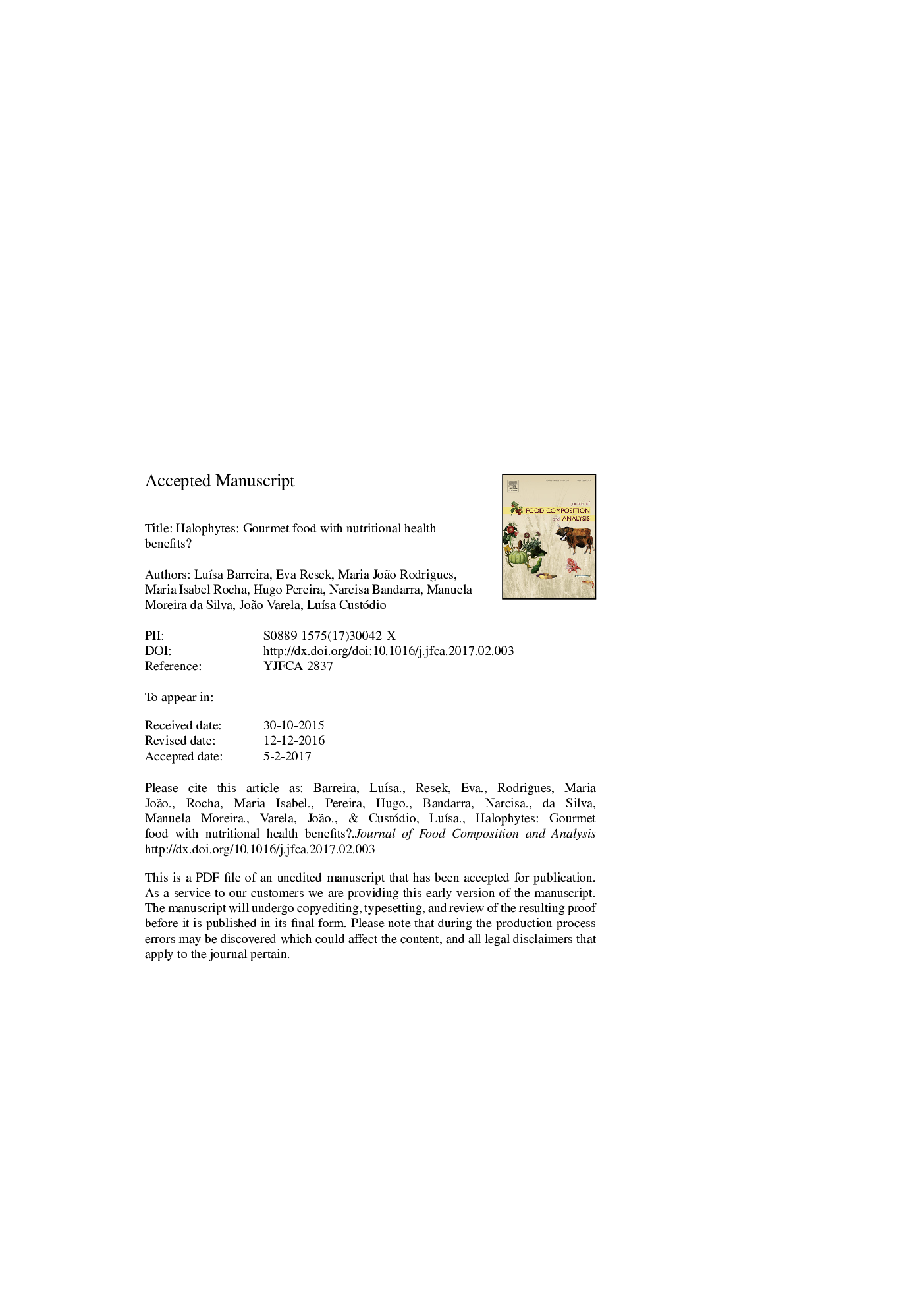| Article ID | Journal | Published Year | Pages | File Type |
|---|---|---|---|---|
| 5136946 | Journal of Food Composition and Analysis | 2017 | 30 Pages |
Abstract
Although little is known about their nutritional composition, Sarcocornia perennis subsp. perennis, S. perennis subsp. alpini and Salicornia ramosissima (Salicorniaceae) as well as Arthrocnemum macrostachyum (Amaranthaceae) are consumed in gourmet cuisine. In spite of belonging to different families, these halophytes share morphological and organoleptic characteristics. This work explored the nutritional properties and the antioxidant potential of these species using five integrative methods. All species had a nutritional profile suitable for human consumption with high levels of protein (5.20-13.2 g/100 g dw) and n-3 polyunsaturated fatty acids (FA), particularly α-linolenic acid (19.3-25.9% of total FA), and low concentration of toxic metals (below the limits imposed by the European Commission). These halophytes are also a good source of minerals, particularly sodium (64.1-109 mg/g dw), and S. ramosissima is an excellent source of manganese (204 μg/g dw). However, due care should be taken not to exceed the legal limits for sodium ingestion. These plants showed also significant antioxidant potential, with high radical scavenging activity (RSA), iron reducing power and total phenolics content (20.5-49.2 mg GAE/g). A. macrostachyum had the highest RSA (IC50-DPPH = 0.84 mg/mL; IC50-NO = 0.60 mg/mL), and iron reducing potential (IC50 = 0.84 mg/mL) along with high levels of α- and γ-tocopherol (8.74 and 4.71 mg/100 g dw, respectively).
Keywords
Related Topics
Physical Sciences and Engineering
Chemistry
Analytical Chemistry
Authors
LuÃsa Barreira, Eva Resek, Maria João Rodrigues, Maria Isabel Rocha, Hugo Pereira, Narcisa Bandarra, Manuela Moreira da Silva, João Varela, LuÃsa Custódio,
